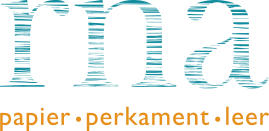This book was the last book in a large conservation project of over 30.000 books carried out for the Ets Haim Library in Amsterdam. The project took more than 10 years and consisted of doing damage assessment; condition reports; setting up a conservation plan and carrying out this plan by Elizabet Nijhoff Asser and a group of 30 freelance conservators.
The Ets Haim Library is the oldest still functioning Jewish library in the world. It was founded in 1639 and has been housed in the historical complex of the Portuguese Jewish community of Amsterdam since 1675. The library’s holdings consist of some 560 manuscripts and 30.000 printed works. The library holds a large and rich collection on the subject of 17th and 18th century Judaism.
This manuscript is a Spanish translation of Hebrew prayers according to Sephardic rites. It is a copy made by Jehuda Machabeu during his stay in Brazil in 1650.
The pages of the book are written within a frame of iron gall ink lines. Most of these lines were brittle and broken. In the past, these broken lines had been beautifully repaired with perfectly cut pieces of Filmoplast tape. However, as a result of creeping adhesive, dust and iron gall ink particles had accumulated along the edges of the tape. In addition, the binding of the book was in bad condition and the complete book had to be resown.
The filmoplast was removed with solvents, page by page, a process taking some 70 hours. The next step was to repair the pages. Some of the pages had come completely loose along all edges of the frame. The pages were repaired with remoistenable tissue made of 2 grams Berlin Tissue and coated with 3% gelatin. The remoistenable tissue was pre-cut unto the melinex in stripes of approximately 5 mm wide.
The repairing was done is such a position that there was a minimal amount of stress on the rest of the pages during repair. The pages were placed in a 90 degree angle, held into position by magnets. After all pages had been repaired the book was rebound and put it back in the original leather binding which is not contemporary.
